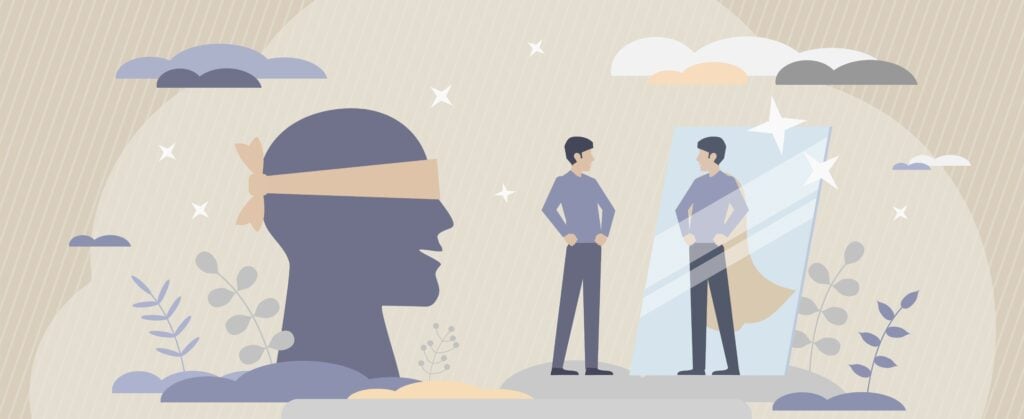Compulsive shopping: Symptoms, causes, and treatment
Reviewed by Brooks Baer, LCPC, CMHP

It’s no secret that a little retail therapy can lift your mood and help you relax. But for some people, shopping isn’t just a pastime—it’s an addiction.


Shopping addiction, also known as compulsive shopping, is characterized by excessive shopping that often leads to financial problems. People who shop compulsively tend to feel intense urges to shop, and they may go on spending sprees where they buy a lot in a short period of time.
For some people, compulsive shopping may be a way to cope with negative emotions or underlying mental health conditions such as anxiety or depression. Others may shop to gain a sense of power or control.
Additional terms used to describe compulsive shopping include:
- Compulsive buying behavior (CBB)
- Compulsive buying disorder (CBD)
- Compulsive shopping disorder
- Compulsive shopping
- Compulsive spending
- Oniomania
Research estimates that 5.8% of the US population struggles with compulsive shopping.1 Although this compulsion can affect anyone, women may be more likely to experience it.2
What does compulsive shopping look like?
Some people call themselves shopping addicts or “shopaholics” in a playful way. But for those who shop compulsively, it’s an uncontrollable obsession.
There are four phases of compulsive shopping:3
1. Anticipation: You become fixated on an item or items you want to buy. You may spend a lot of time thinking about the item, thinking about shopping for it, and talking about it with others.
2. Preparation: You start to feel excited and happy about the prospect of buying the item. You may make plans to research the item, go shopping, save money, or borrow money to make the purchase.
3. Shopping: You go shopping for the item. This is often accompanied by feelings of excitement and euphoria. For some people, it can even cause sexual arousal.4
4. Spending: You buy the item and feel a rush of pleasure or relief. This is often followed by feelings of guilt, shame, and emptiness.
Compulsive shopping is likely fueled by emotional needs. For example, someone who’s feeling sad or has low self-esteem may turn to shopping to cope with those negative feelings.
Is compulsive shopping a mental disorder?
Compulsive shopping was previously recognized as an addiction in the “Diagnostic and Statistical Manual of Mental Disorders” (DSM-5), but it was removed in 2013 due to a lack of scientific evidence for diagnosis.5 This means it is not officially defined as a disorder today. However, compulsive shopping is still a real concern and an impulsive behavior that many experts believe should still be considered a disorder.6
It’s also worth noting that extreme spending behavior can be a symptom of mania associated with bipolar disorder, but there’s no link between bipolar disorder and the kind of compulsive buying discussed here.7
Signs of compulsive shopping
It can be tricky to distinguish compulsive shopping from standard-issue retail therapy. Here are some key signs to look for:
- You shop primarily to feel happy or to relieve stress.
- You spend a lot of time thinking about shopping, planning to shop, and actually shopping.
- You often obsess over or get anxious about shopping for a specific item.
- You frequently shop when you’re feeling down, anxious, or bored.
- You often buy things you don’t need or can’t afford.
- You always pay by credit card to avoid the stress of having to pay with funds on hand.
- After buying something, you feel regretful, guilty, or ashamed.
- Your home or closet is full of unopened or unused items from previous shopping sprees.
- You try to keep your shopping habits secret from others.
- Your financial situation is suffering because of your shopping.
- You’ve had problems at work or school because you spend so much time shopping.
- Friends or family have expressed their concern about your shopping or your finances.
What causes people to shop compulsively?
Compulsive shopping likely results from a combination of psychological, social, and cultural factors. There may also be a genetic component, as compulsive shopping tends to run in families—especially those with a history of mood and substance abuse disorders.8
Compulsive shoppers may have a history of trauma or abuse. In some cases, this behavior can stem from another underlying mental health condition. Research has linked it to major mood disorders, anxiety disorders, impulse control disorders, and even eating disorders.9
No personality type is more likely to develop this behavior than others, but one study showed that 60% of people who engaged in compulsive buying met the criteria for at least one personality disorder.10 These included obsessive-compulsive, avoidant, and borderline personality disorders. A few also exhibited narcissistic characteristics.
The impact of compulsive shopping
Compulsive shopping can affect your mental health and many aspects of your life, including your finances and your relationships.
The most common consequences of compulsive shopping include:
- Emotional distress: In one study by Maraz et al., 45% of compulsive shoppers who participated said they felt guilty about their shopping.11
- Relationship difficulties—especially with romantic partners—because of how much money is spent: The same study reported that 33% of compulsive shoppers had been criticized by family and friends for their shopping and spending habits.12
- Overspending and debt: Also according to the Maraz study, 58% of compulsive buyers had large debts, 42% couldn’t make their debt payments, 8% had financial legal problems, and 8% had criminal legal problems.13
- Problems at work: People who work from home are more likely to shop compulsively than people who work onsite.14 Working from home is associated with more intensive internet use, which can contribute to mental health problems, such as depression, and in turn affect online buying habits.
Treatment options
There are no standard clinical treatments for compulsive shopping, but there are ways to get help.
Group therapy has proven to be an effective treatment option for people who struggle with compulsive shopping.15 This may involve a 12-step program, which typically requires attending meetings and working with a sponsor to help stay on track.
Cognitive behavioral therapy (CBT) has helped people with a variety of impulse control disorders, including kleptomania (stealing) and pathological gambling.16 CBT can be used in individual therapy or group therapy.
Medication, such as antidepressants, may be prescribed to people who shop compulsively, especially if talk therapy doesn’t have the desired outcome. However, more research is needed on whether medication is truly effective for treating compulsive shopping.17
Couples therapy or family therapy may be beneficial if your compulsive shopping habits are damaging your relationships.
Financial counseling can help you develop the skills to set a budget and pay off debt, though it probably won’t address the underlying psychological causes of compulsive shopping.
Lifestyle changes, such as keeping track of purchases or finding other ways to reward yourself, may also help you curb your urge to shop.
As noted above, compulsive shopping may stem from other mental health conditions. If you’re having a hard time managing your shopping and spending habits, a mental health professional can help you get to the root of the problem. Browse our directory to find a therapist near you.
You deserve the support and care you need to build a healthy relationship with shopping. With the right help, you’ll get there.

Sources
1 https://www.researchgate.net/figure/Detailed-prevalence-estimates_tbl1_283447103/
2 https://www.ncbi.nlm.nih.gov/pmc/articles/PMC1805733/
3 https://www.ncbi.nlm.nih.gov/pmc/articles/PMC1805733/
4 https://www.ncbi.nlm.nih.gov/pmc/articles/PMC1805733/
5 https://www.researchgate.net/publication/264051559_DSM-5_and_the_Decision_Not_to_Include_Sex_Shopping_or_Stealing_as_Addictions/
6 https://theconversation.com/shopping-addiction-is-a-real-disorder-123813/
7 https://pubmed.ncbi.nlm.nih.gov/22051076/
8 https://www.ncbi.nlm.nih.gov/pmc/articles/PMC1805733/
9 https://psycnet.apa.org/record/1995-01870-001/
10 https://pubmed.ncbi.nlm.nih.gov/8063088/
11 https://www.researchgate.net/publication/283447103_The_prevalence_of_compulsive_buying_A_meta-analysis/
12 https://www.researchgate.net/publication/283447103_The_prevalence_of_compulsive_buying_A_meta-analysis/
13 https://www.researchgate.net/publication/283447103_The_prevalence_of_compulsive_buying_A_meta-analysis/
14 https://article.sciencepublishinggroup.com/pdf/10.11648.j.jbed.20210604.13.pdf
15 https://www.ncbi.nlm.nih.gov/pmc/articles/PMC5264404/
16 https://pubmed.ncbi.nlm.nih.gov/17713695/
17 https://core.ac.uk/download/pdf/154273005.pdf
About the author
The editorial team at therapist.com works with the world’s leading clinical experts to bring you accessible, insightful information about mental health topics and trends.
Related articles

Caffeine addiction: What it is and how to break it
Though many people use it without issue, caffeine can be an addictive...

The Dunning-Kruger effect is a type of bias where the less you know about a...

Passive aggression: What it is and how to stop
Passive aggression is an unhealthy communication style where negative feelings...

Collecting and keeping too many things may be a sign of hoarding disorder...
